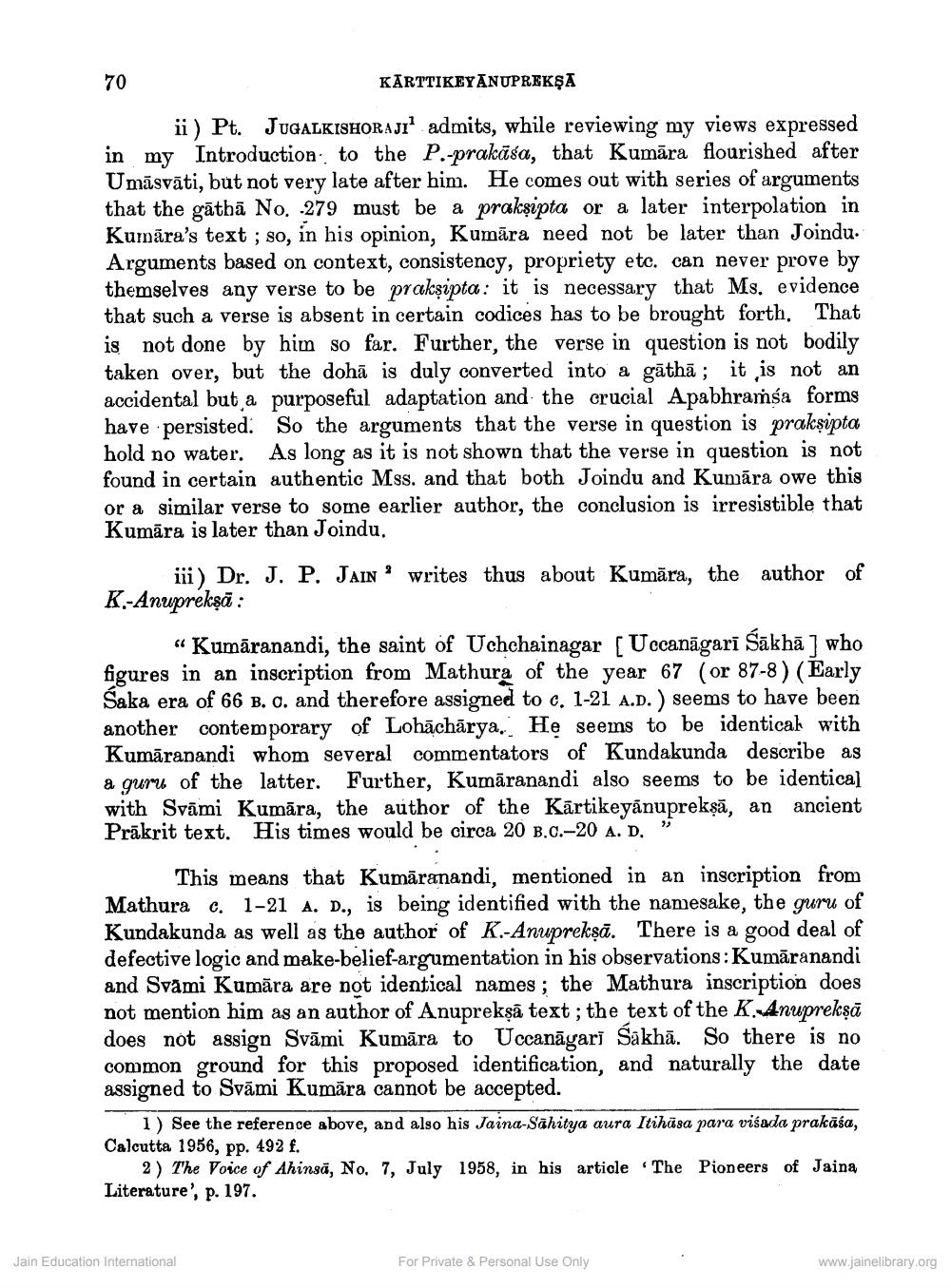________________
KĀRTTIKEYANUPREKŞA
ü) Pt. JUGALKISHORAJI admits, while reviewing my views expressed in my Introduction to the P.-prakāśa, that Kumāra flourished after Umāsvāti, but not very late after him. He comes out with series of arguments that the gāthā No. 279 must be a prakṣipta or a later interpolation in Kumāra's text ; so, in his opinion, Kumāra need not be later than Joindu. Arguments based on context, consistency, propriety etc. can never prove by themselves any verse to be prakṣipta: it is necessary that Ms. evidence that such a verse is absent in certain codices has to be brought forth. That is not done by him so far. Further, the verse in question is not bodily taken over, but the dohā is duly converted into a gāthā; it is not an accidental but a purposeful adaptation and the crucial Apabhramsa forms have persisted. So the arguments that the verse in question is prakṣipta hold no water. As long as it is not shown that the verse in question is not found in certain authentic Mss. and that both Joindu and Kumāra owe this or a similar verse to some earlier author, the conclusion is irresistible that Kumāra is later than Joindu.
iii) Dr. J. P. Jainwrites thus about Kumāra, the author of K.-Anuprékşā :
“Kumāranandi, the saint of Uchchainagar Uccanāgarī Sākhā 7 who figures in an inscription from Mathura of the year 67 (or 87-8) (Early Saka era of 66 B. C. and therefore assigned to c. 1-21 A.D.) seems to have been another contemporary of Lohāchārya. He seems to be identical with Kumāranandi whom several commentators of Kundakunda describe as a guru of the latter. Further, Kumāranandi also seems to be identica] with Svāmi Kumāra, the author of the Kārtikeyānupreksā, an ancient Prākrit text. His times would be circa 20 B.C.-20 A. D.”
This means that Kumāranandi, mentioned in an inscription from Mathura c. 1-21 A. D., is being identified with the namesake, the guru of Kundakunda as well as the author of K.-Anupreksā. There is a good deal of defective logic and make-belief-argumentation in his observations: Kumāranandi and Svāmi Kumāra are not identical names; the Mathura inscription does not mention him as an author of Anuprekşā text; the text of the K. Anuprekşā does not assign Svāmi Kumāra to Uccanāgari Sakhā. So there is no common ground for this proposed identification, and naturally the date assigned to Svāmi Kumāra cannot be accepted.
1) See the reference above, and also his Jaina-Sahitya aura Itihāsa para visada prakāśa, Calcutta 1956, pp. 492 f.
2) The Voice of Ahinsa, No. 7, July 1958, in his article The Pioneers of Jaina Literature', p. 197.
Jain Education International
For Private & Personal Use Only
www.jainelibrary.org




